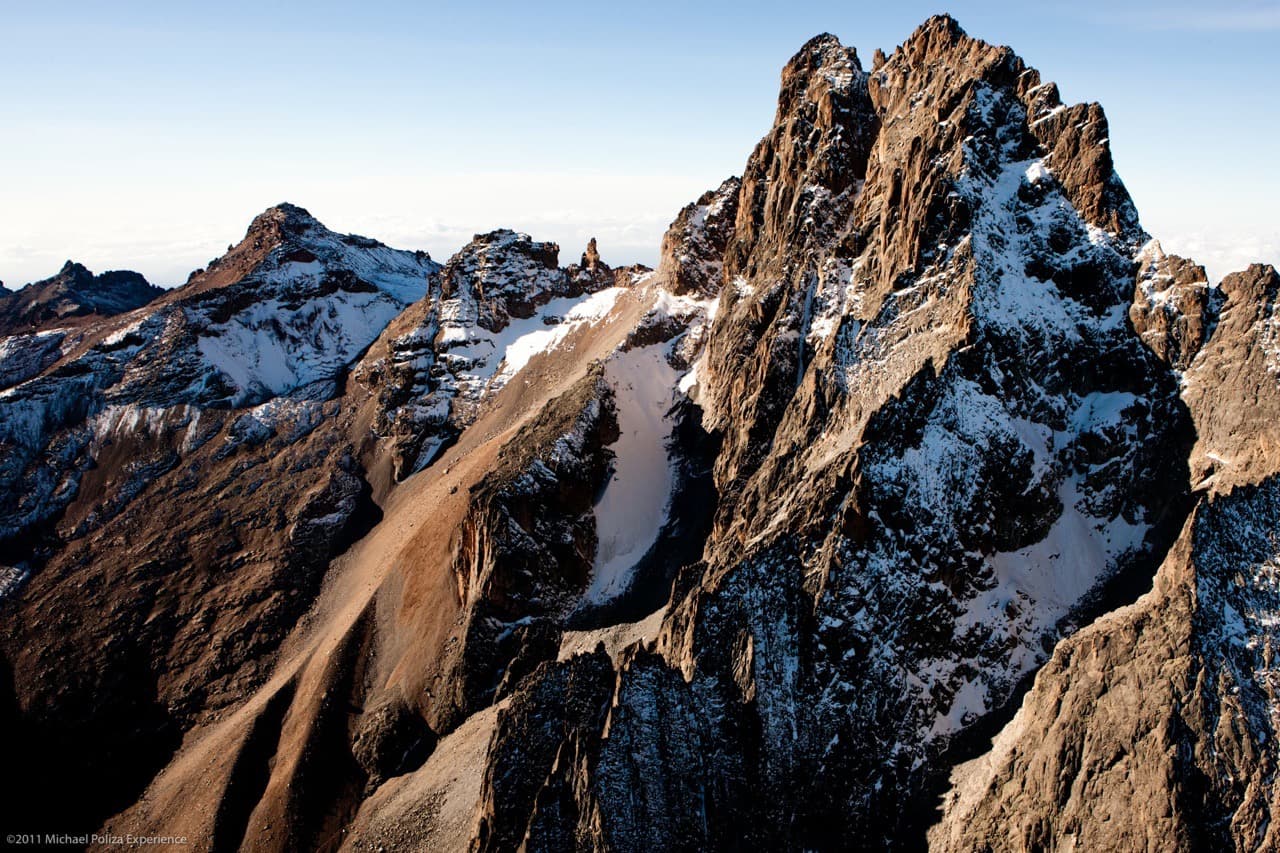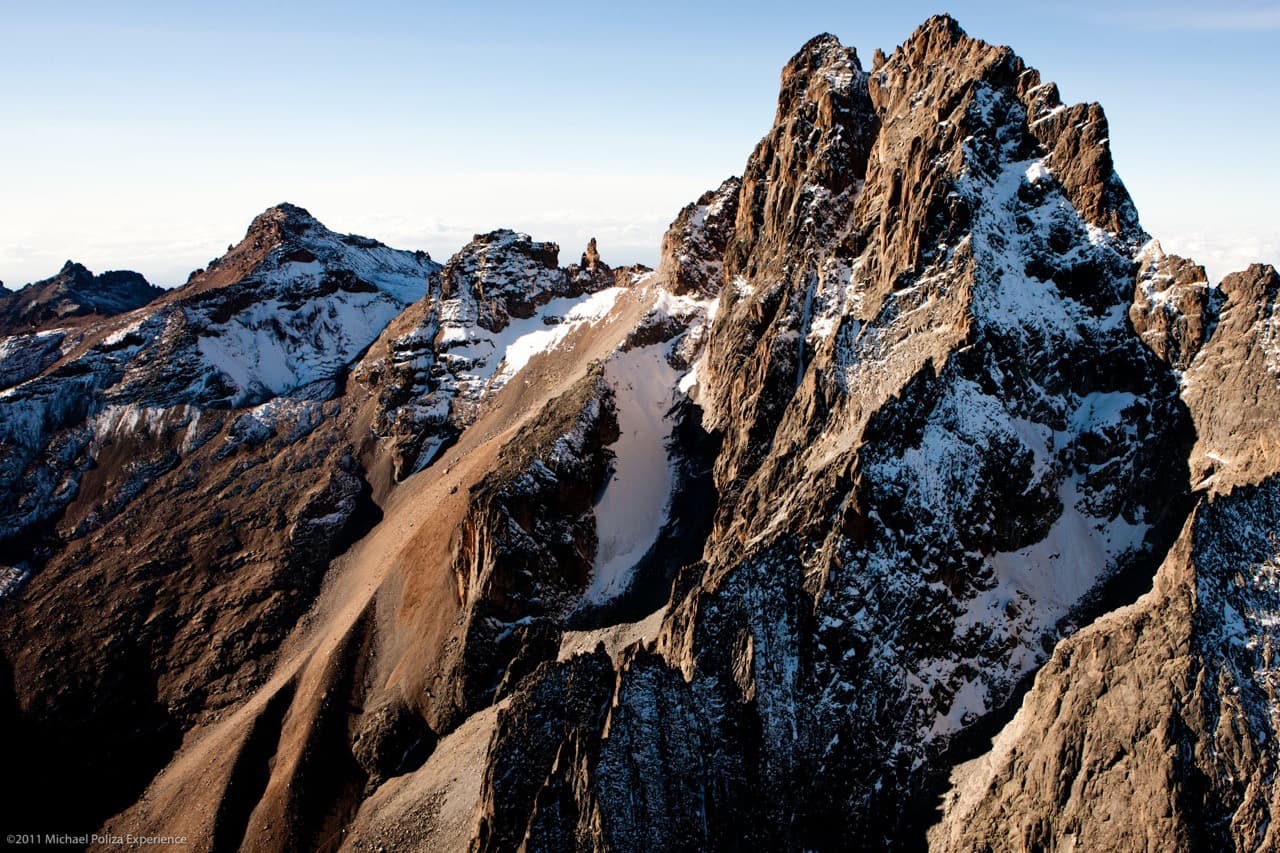
Photo of Mt Kenya. Credit Tropic Air
High above the equatorial plains of Kenya rises Mount Kenya, Africa’s second-highest mountain. For centuries, its jagged peaks have been crowned with gleaming glaciers rare equatorial ice that has nourished rivers, anchored ecosystems, and inspired spiritual traditions. But today, the mountain’s icy cap is vanishing before our eyes.
The Science of Retreat
The retreat of Mount Kenya’s glaciers is driven by a changing climate. Rising global temperatures mean that snowfall in the alpine zone is no longer enough to replenish the ice. Meanwhile, rainfall patterns across East Africa have become more erratic, with long dry spells punctuated by heavy downpours. This mismatch deprives the glaciers of the steady accumulation they once relied upon.
Satellite imagery from missions like Landsat and MODIS confirm what climbers and local communities already know: each year, the ice line creeps higher, and once-solid glaciers fracture into isolated patches. Some glaciers, such as the Lewis Glacier, the largest remaining on the mountain, have lost hundreds of meters of length in recent decades.
Consequences Down the Mountain
The disappearance of Mount Kenya’s glaciers is not just a symbolic loss. The ice is a vital water source. Glacial melt feeds rivers such as the Tana and the Ewaso Ng’iro, which support millions of Kenyans downstream. From hydropower dams that generate much of the country’s electricity, to farms that grow tea, coffee, and vegetables, to pastoralist communities herding livestock in the semi-arid north, the mountain’s waters sustain life far beyond its slopes.
Ecosystems are also at risk. Mount Kenya’s alpine zone is home to giant lobelias, senecios, and other rare plants that have adapted to the cold, frost-filled nights and thawing mornings created by the glaciers. These plants, in turn, shelter insects and birds uniquely tied to the high-altitude ecosystem. As the ice disappears, these fragile habitats face collapse.
For local communities, the retreat is deeply personal. The Kikuyu and Meru peoples regard Mount Kenya, Kirinyaga, “the place of brightness”, as sacred. Its snowcapped peaks are central to myths, prayers, and identity. Watching the mountain shed its ice is not only an environmental crisis, but also a cultural wound.
A Global Story, Told Locally
Mount Kenya’s story is not isolated. Across the tropics, glaciers are vanishing. On Africa’s highest peaks, Kilimanjaro in Tanzania and the Rwenzori Mountains on the Uganda - DRC border, the ice is shrinking rapidly, with scientists warning that they too may disappear within decades.
Beyond Africa, the Andes of South America tell a similar story. Glaciers in Peru, Bolivia, and Colombia, which provide vital water for cities and farming communities, have been retreating at alarming rates. Some smaller glaciers in the tropical Andes have already disappeared entirely, threatening water supplies for millions in Lima, La Paz, and Quito.
Together, these disappearing glaciers, from Africa to South America, are some of the clearest symbols of climate change. They connect distant regions in a shared struggle: losing ancient ice that once seemed eternal, with consequences that ripple far downstream into farms, cities, and cultures.
